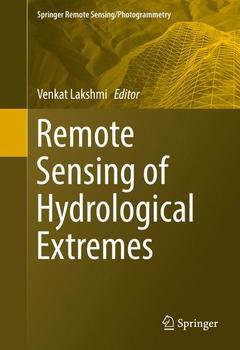Description
Remote Sensing of Hydrological Extremes, 1st ed. 2017
Springer Remote Sensing/Photogrammetry Series
Language: English
Subjects for Remote Sensing of Hydrological Extremes:
Publication date: 12-2016
Support: Print on demand
Publication date: 07-2018
Support: Print on demand
Description
/li>Contents
/li>Biography
/li>Comment
/li>
Part 1 Floods.- Chapter 1 Satellite-based estimation Of water discharge and runoff In the Magdalena River, Northern Andes Of Colombia.- Chapter 2 Remote sensing of drivers of spring snowmelt flooding in the North Central US.- Chapter 3 The NASA Global Flood Mapping System.- Chapter 4 Congo flood plain hydraulics with PALSAR InSAR and Envisat Altimetry data.- Chapter 5 Optical and physical methods for mapping flooding with satellite imagery.- Chapter 6 Near real time flood monitoring and impact assessment systems.- Part 2 Droughts.- Chapter 7 Remote sensing of drought: Vegetation, soil moisture and data assimilation.- Chapter 8 Drought monitoring and assessment using remote sensing.- Chapter 9 A framework for assessing soil moisture deficit, and crop water stress at multiple space and time scales under climate change scenarios using model platform, satellite remote sensing and decision support system.- Chapter 10 Monitoring drought in Brazil using remote sensing.- Chapter 11 Multi-sensor remote sensing of drought from space.




